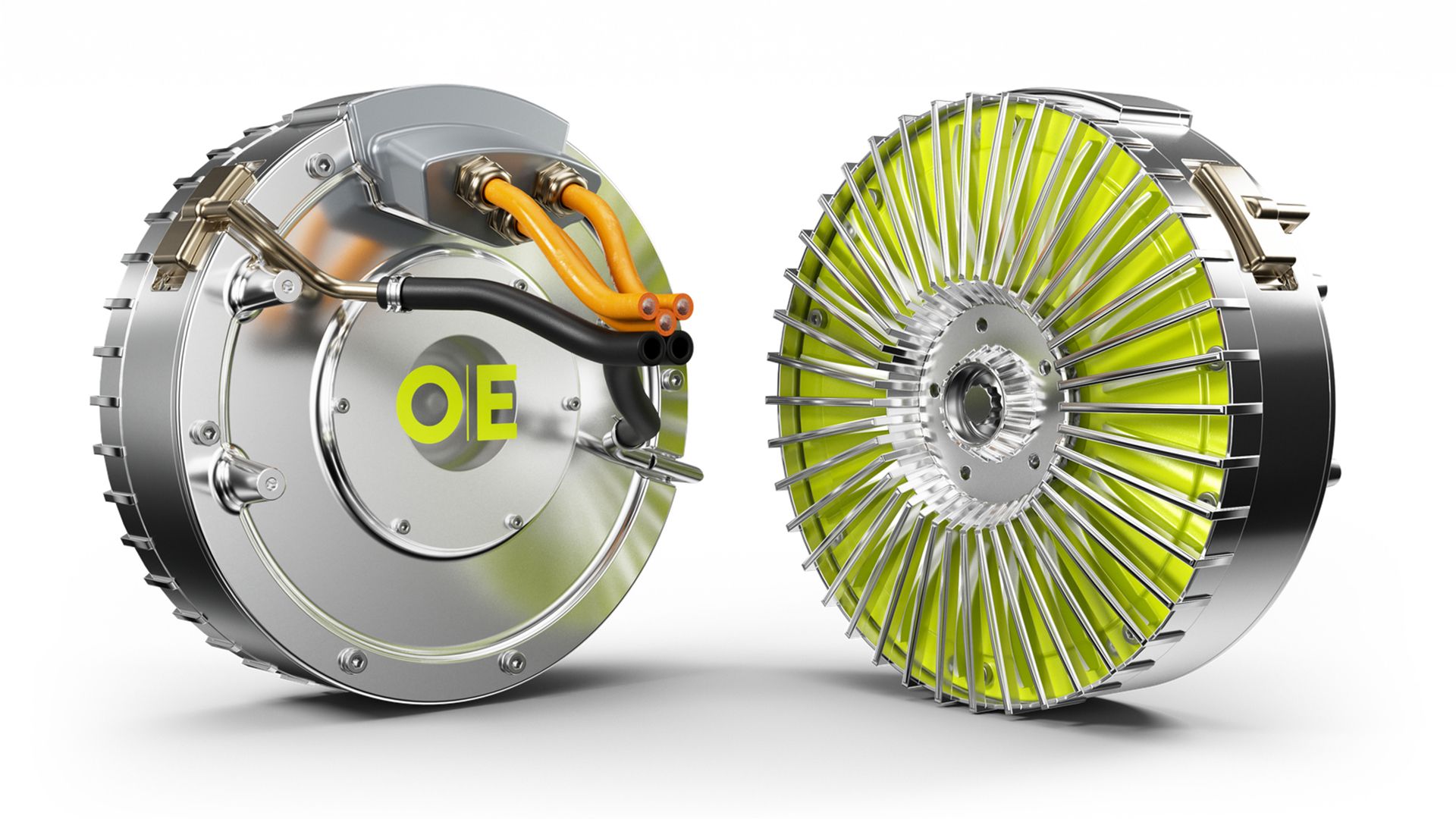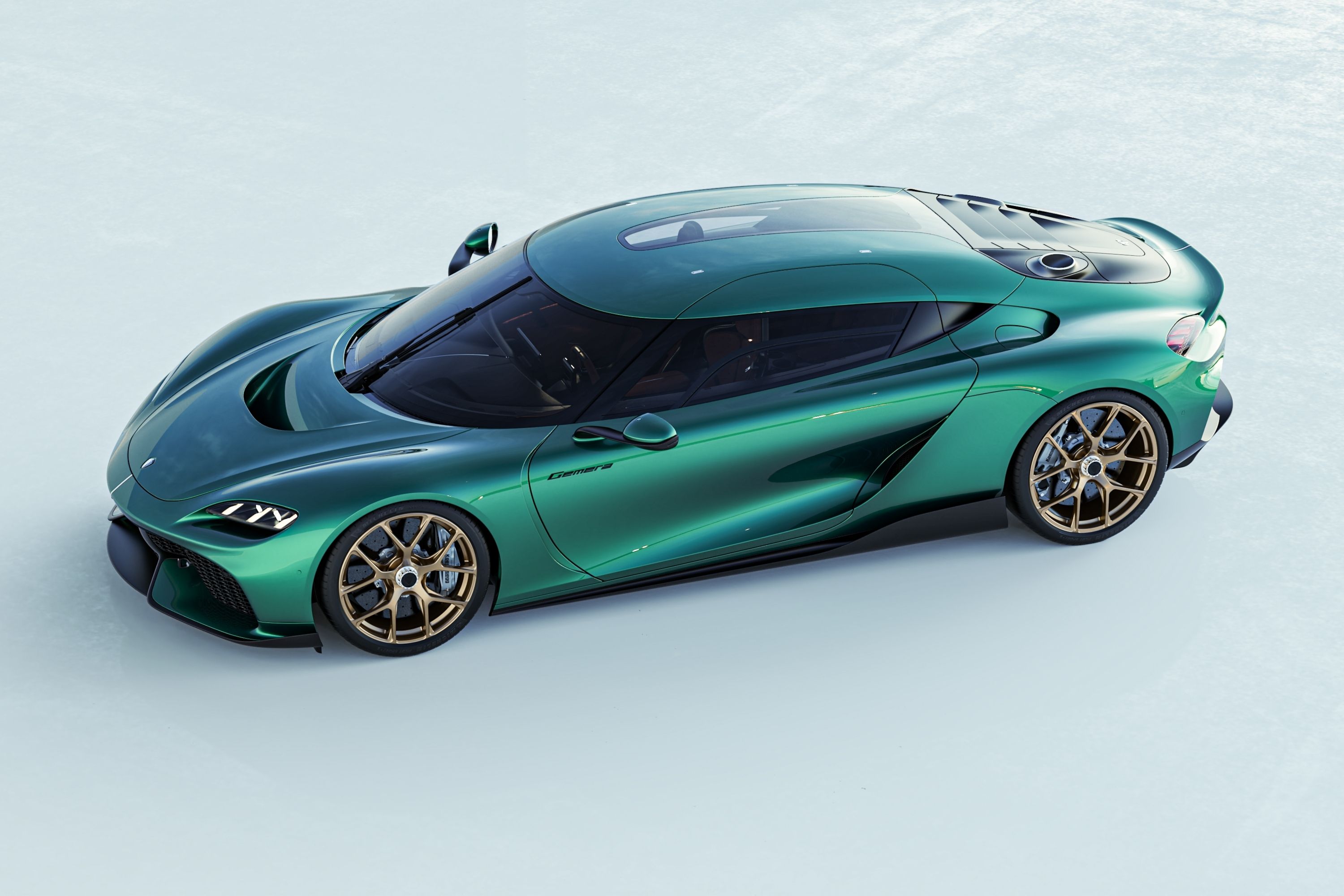Electric vehicles boast immense, instantaneous torque, but the performance often comes with a weight penalty. Automakers and startups have already started addressing the issue with more compact and efficient motors. Mercedes-AMG has introduced axial-flux motors from Yasa, now with notable improvements from before, while Koenigsegg has developed the ultra-light Dark Matter motor for the Gemera.
- Base Trim Engine
- 2.0L Twin-Turbo Inline-3 Plug-in Hybrid
Enter Orbis Electric – a California-based startup with a different take: in-wheel propulsion using a compact axial-flux design. The company’s new HaloDrive motor is designed to reduce drivetrain complexity and weight by integrating directly into each wheel, taking unsprung weight out of the equation, further improving the vehicle's ride quality and handling.
A Modular, High-Torque, In-Wheel Electric Drive
HaloDrive is a patented axial-flux motor that produces up to 560 horsepower and approximately 4,056 pound-feet of torque at the wheel, according to Orbis. No, that's not a typo. That’s approximately four times the torque of a high-output 6.7-liter Cummins diesel, produced right at the wheel. However, it's important to note that the torque figure reflects at-the-wheel output, so it's higher than expected and not directly comparable to traditional combustion engines.
Moreover, an early version of Orbis Electric's in-wheel motor weighs just 65 pounds and incorporates a plastic stator, a tunable gearset, and Orbis’ proprietary EcoWave braking system. The result is a power-dense, efficient unit that integrates easily into existing platforms – with the possibility to be used with hybrid setups. The company claims a torque density of 100 Nm/kg (33.5 lb-ft/pound) and an efficiency of up to 97%.
There's Already Competition At This Early Stage
Orbis Electric’s HaloDrive sounds promising, with the company even touting a collaboration with Volkswagen for an all-wheel drive EV that uses its in-wheel motor technology. However, it isn’t alone in this segment. At CES 2025, Donut Lab revealed a similar 88-pound in-wheel motor design generating 845 hp and 3,171 lb-ft of torque per unit. Higher peak power, but Orbis has the upper hand in terms of torque density.
The future of EVs (and hybrids) could hinge on this development of in-wheel motors, with Orbis Electric claiming 35% lower drivetrain costs compared to radial-flux motors that EVs currently use. And with the location of these motors, there's essentially no parasitic power loss that comes through axles on EVs with centrally mounted motors. There's considerably less parasitic loss compared to an internal combustion engine, which has to send power through a gearbox, a driveshaft, or axle shafts before reaching the ground.
These companies have long been trying to perfect the new technology; Orbis Electric’s in-wheel motor development can be traced back to 2018 when it introduced an FK8 Honda Civic Type R with e-motors in the rear wheels (watch below). The company has come a long way since, but not nearly as long as when Ferdinand Porsche first worked on an in-wheel motor over a century ago.







.jpeg)
Comments
Post a Comment